The Key To Reducing Workers’ Compensation Insurance Costs
Workers’ compensation insurance is essential for protecting both employers and employees from the financial impact of workplace injuries or illnesses. However, the costs associated with this insurance can be significant, often becoming a major expense for businesses. Fortunately, there are proactive measures that businesses can take to manage and reduce these costs.
Discover practical strategies that can help your business lower workers’ compensation insurance premiums, minimize claims, and create a safer work environment.
Implementing a Robust Workplace Safety Program
One of the most effective ways to reduce workers’ compensation insurance costs is by establishing a strong workplace safety program. Not to be confused with general liability insurance, a well-designed safety program helps prevent workplace injuries while demonstrating to your insurance carrier that your business is committed to maintaining a safe work environment, which can lead to lower premiums.
A robust safety program should include:
- Clear Safety Policies: Develop and communicate a comprehensive safety policy that outlines your company’s commitment to safety. This policy should cover the use of personal protective equipment (PPE), proper handling of hazardous materials, and safety protocols for specific work environments.
- Routine Safety Training: Regularly train employees on safety procedures, hazard recognition, and the proper use of equipment. Training should be tailored to the specific risks associated with your industry and work environment.
- Emergency Response Planning: Create and practice emergency response procedures for various potential incidents, such as fires, chemical spills, or equipment malfunctions. Employees should know how to react quickly and efficiently to minimize harm.
- Safety Incentive Programs: Encourage safe behavior by implementing safety incentive programs that reward employees for maintaining a safe work environment. These programs can motivate employees to adhere to safety protocols and contribute to a culture of safety.
According to the Occupational Safety and Health Administration (OSHA), businesses that implement comprehensive safety and health programs can reduce their injury and illness costs by 20 to 40%. By investing in safety, businesses can significantly lower their workers’ compensation insurance costs and create a safer workplace for their employees.
Prioritizing Employee Training and Education
Employee training and education are critical components of an effective safety program. Well-trained employees are less likely to be involved in workplace accidents, which can reduce the number of workers’ compensation claims and, consequently, insurance costs.
To maximize the effectiveness of your training program:
- Conduct Regular Training Sessions: Offer ongoing training that covers safety procedures, hazard recognition, and the correct use of equipment. Ensure that training is interactive and includes hands-on practice when applicable.
- Focus on New Employees: New hires are often unfamiliar with your company’s safety protocols and may be at a higher risk of injury. Provide thorough safety training during the onboarding process and consider pairing new employees with experienced mentors who can provide additional guidance.
- Tailor Training to Specific Roles: Different roles within your organization may face different risks. Customize training programs to address the specific hazards associated with each job function, ensuring that all employees are well-prepared to perform their duties safely.
- Refresh Training Regularly: Safety procedures and regulations can change over time, so it’s important to keep training up to date. Regularly review and update your training materials to reflect the latest safety standards and best practices.
Investing in employee training not only helps prevent accidents but also demonstrates your commitment to safety, which can result in lower workers’ compensation premiums.
Did you know that having a safety program not only increases employee engagement but also helps lower commercial insurance costs? Learn how to protect your employees and your business.
Conducting Regular Workplace Inspections
Regular workplace inspections are an essential part of any safety program. These inspections help identify potential hazards before they result in accidents, allowing you to address issues proactively and prevent injuries.
Key steps in conducting effective workplace inspections include:
- Establish a Schedule: Set up a regular schedule for workplace inspections. Depending on the nature of your business, inspections may be conducted daily, weekly, or monthly. Ensure that all areas of the workplace are inspected, including equipment, workstations, and common areas.
- Involve Employees: Encourage employees to participate in the inspection process. They are often the first to notice potential hazards in their work areas and can provide valuable insights. Consider forming a safety committee that includes representatives from different departments to conduct inspections and review findings.
- Document Findings: Keep detailed records of inspection results, noting any hazards identified and the corrective actions taken. This documentation can be useful for tracking improvements over time and demonstrating your commitment to safety during insurance audits.
- Follow Up on Corrective Actions: After hazards are identified, ensure that corrective actions are implemented promptly. Assign responsibility for addressing each issue and follow up to confirm that the necessary changes have been made.
Regular inspections not only help prevent accidents but also show your insurance carrier that you are actively managing workplace risks, which can lead to lower premiums.
Managing Claims Effectively
Effective claims management is another critical factor in controlling workers’ compensation insurance costs. The way you handle claims can have a significant impact on your insurance premiums, as frequent or poorly managed claims can result in higher costs.
To manage claims effectively:
- Report Injuries Promptly: Ensure that all workplace injuries are reported to your insurance carrier as soon as possible. Prompt reporting helps expedite the claims process and ensures that employees receive the care they need quickly, reducing the likelihood of complications.
- Investigate All Claims: Conduct thorough investigations of all claims to determine the root cause of the injury and identify any contributing factors. This information can help prevent similar incidents in the future and may also reveal fraudulent claims.
- Communicate With Injured Employees: Maintain open communication with injured employees throughout the claims process. Show empathy and support for their recovery, and keep them informed about their claim status. This can help prevent misunderstandings and reduce the likelihood of disputes.
- Return-to-Work Programs: Implement a return-to-work program that allows injured employees to transition back to work as soon as they are medically able, even if it means starting with modified duties. Early return to work can reduce the length of disability and lower the overall cost of the claim.
- Monitor Claim Costs: Regularly review the costs associated with each claim and work with your insurance carrier to identify opportunities to reduce expenses. This may involve negotiating with healthcare providers, exploring alternative treatments, or challenging excessive charges.
By managing claims effectively, businesses can minimize the impact of workers’ compensation claims on their insurance costs and maintain lower premiums.
Reviewing and Optimizing Your Insurance Policy
Another important step in reducing workers’ compensation insurance costs is to review and optimize your insurance policy. This involves working closely with your insurance broker or carrier to ensure that your coverage is appropriate for your business and that you are not overpaying for unnecessary coverage.
Consider the following strategies:
- Evaluate Your Coverage Needs: Assess your current coverage to determine if it accurately reflects your business’s needs. Ensure that your policy covers all employees and job functions but avoid paying for coverage that you don’t need.
- Explore Deductible Options: Higher deductibles can lead to lower premiums, but they also mean that your business will be responsible for a larger portion of the costs in the event of a claim. Consider whether a higher deductible is a viable option for your business based on your financial situation.
- Review Classifications: Workers’ compensation premiums are based, in part, on how your employees are classified according to their job duties. Ensure that your employees are classified correctly, as misclassifications can lead to higher premiums. Work with your insurance carrier to review and update classifications as needed.
- Seek Competitive Quotes: Don’t be afraid to shop around for workers’ compensation insurance. Different carriers may offer different rates and discounts, so it’s worth comparing quotes from multiple providers to find the best deal.
- Leverage Discounts and Credits: Many insurance carriers offer discounts or credits for businesses that implement safety programs, maintain low claims rates, or participate in industry safety initiatives. Be sure to take advantage of any discounts or credits for which your business may qualify.
By reviewing and optimizing your insurance policy, you can ensure that your coverage is both adequate and cost-effective, helping to reduce your overall workers’ compensation insurance costs.
Fostering a Culture of Safety
Finally, fostering a culture of safety within your organization is perhaps the most effective long-term strategy for reducing workers’ compensation insurance costs. When safety is ingrained in your company’s culture, employees are more likely to adopt safe work practices, reducing the likelihood of accidents and claims.
To build a strong safety culture:
- Lead by Example: Management should demonstrate a commitment to safety by following safety protocols and encouraging safe behavior among employees. When leaders prioritize safety, it sets the tone for the entire organization.
- Engage Employees: Involve employees in safety initiatives and encourage them to take ownership of safety in their work areas. This can include participating in safety committees, reporting hazards, and suggesting improvements.
- Recognize and Reward Safe Behavior: Acknowledge employees who consistently demonstrate safe work practices. This can be done through formal recognition programs, safety awards, or other incentives.
- Communicate Regularly: Keep safety top of mind by communicating regularly about safety topics. This can include safety bulletins, meetings, and training sessions.
With this approach, businesses can create an environment where safety is prioritized, reducing the likelihood of accidents and ultimately lowering workers’ compensation insurance costs.
The Bottom Line
Reducing workers’ compensation insurance costs requires a proactive approach that includes implementing a robust safety program, prioritizing employee training, conducting regular workplace inspections, managing claims effectively, and optimizing your insurance policy.
By taking these steps and fostering a culture of safety within your organization, you can significantly reduce your workers’ compensation premiums and create a safer, more productive work environment.
Lower Your Workers’ Compensation Insurance Costs WIth NEC Insurance
In Missouri, workers’ comp coverage is not just a recommendation; it’s the law. Companies with even one full-time employee must have it or face hefty fines and penalties.
But with NEC Insurance on your side, you can navigate these challenges. With our extensive knowledge of insurance strategies and products, we can guide you on how to reduce your workers’ compensation insurance costs. Contact us today to learn more.
"*" indicates required fields
Share This Post
About Us
NEC Insurance supports Missourians with high-quality coverage for businesses and individuals. We apply over 45 years of experience to help you navigate the market and deliver the policies you deserve.











